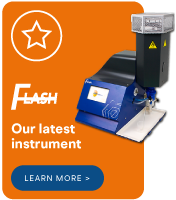What is a flame photometer used for detecting in the real world?
- BWB Technologies
- Feb 18, 2021
- 2 min read
Updated: Mar 8, 2022
A flame photometer is a scientific instrument which is based on flame testing. But how is it used in the real world for testing and measuring?
Experts generally use it to measure the concentration of ionic species in aqueous solutions. In layman’s terms – identifying chemicals in water-based solutions.
However, flame photometry is used around the world every day within a number of different industries.
What is flame photometry?
Flame photometry is the process of measuring the intensity of light emitted when an element is exposed to a flame, using a wavelength of a colour.
Not all elements are detectable by flame photometry.
When it comes to detecting the concentration of an element via flame photometry, said element must exhibit a specific set of prerequisites to make it suitable for analysis.
You can usually split most samples up into two different categories: a liquid sample or a solid sample that must be turned into a liquid.
The liquid of choice is normally water; however, it is not uncommon for liquid samples to also contain other liquids, such as hydrocarbons like oils or alcohol.
Using photometers in the food industry
A very common use for photometers is within the food industry.
Salt levels in the last century have started to be closely monitored for health reasons, as too much salt can cause high blood pressures and a whole host of other health issues.
Another common use for photometers in the food industry is to detect for the presence of sugar in water.
This is carried out via using a potassium standard, which is mixed with the flow of water that may or may not contain sugar. If a rise in potassium levels is detected from the temperature increase, then sugar is present.
This is what is known as an indirect qualitative determination, as you are not directly determining the concentration of sugars in the sample, but instead establishing a yes or no answer to there being sugars present in the solution.
Using photometers in healthcare
Another common use for photometry is the detection of lithium is blood samples.
Lithium Carbonate is commonly used to treat Bipolar disorder. However, if not carefully regulated in the body, it can cause issues with diabetes and the central nervous system, as well as renal failure.
Another use for photometers is looking at urine samples to detect irregularities in ion levels, which can be a signal of kidney damage due to it not properly filtering out important electrolytes from the body.
Other uses for flame photometers
It may be odd to hear but testing drinking water is usually not carried out via a flame photometer due to its limited analytes that it can detect.
It usually is detected via an ICP-OES instrument so that a huge range of elemental analysis can be carried out to test for heavy metal contaminants.







